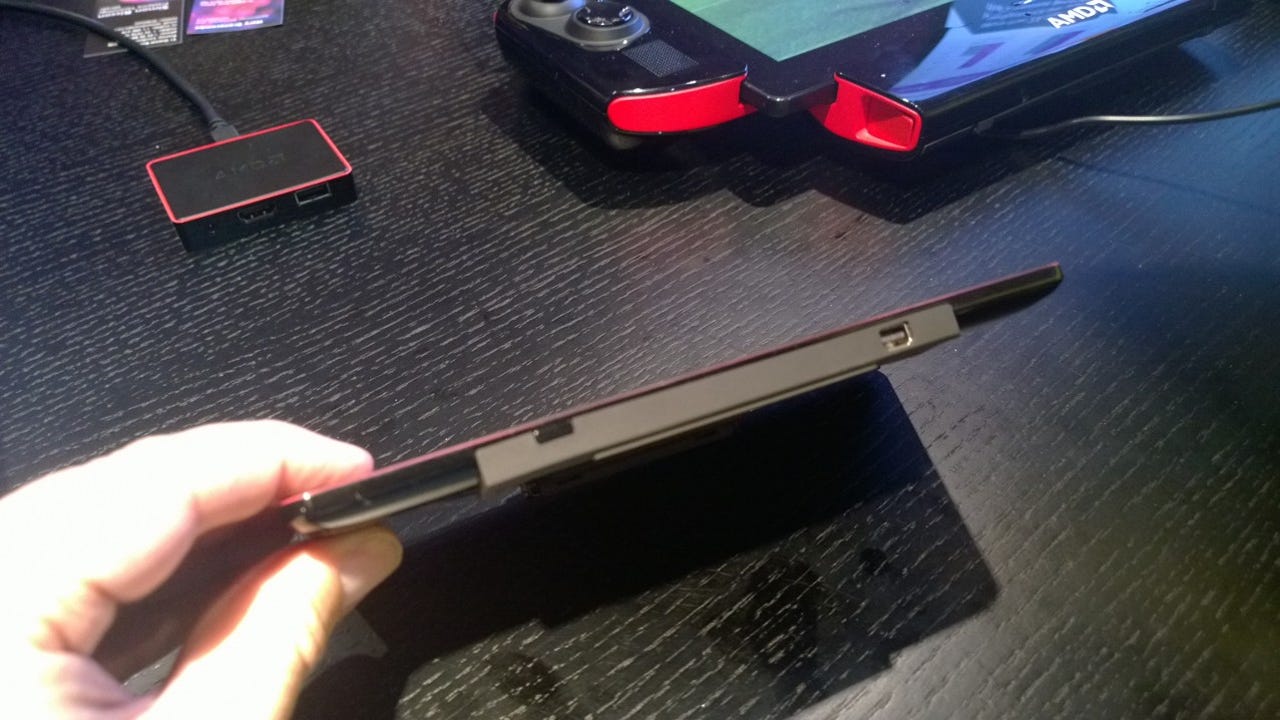Will these tiny computers herald the arrival of the Internet of Things?

If we're to build a ubiquitous, ambient computing future, we're going to need smaller computers. After all, to paraphrase Douglas Adams, and to take the point of view of an electron: "Computers are big. You just won't believe how vastly, hugely, mind-bogglingly big they are. I mean, you may think it's a long way down the road to the chemist's, but that's just peanuts to computers."
It might seem a little silly to compare the modern computer to the whole of the universe, but if we're to build an Internet of Things (IoT) then we need to make our computers smaller - much smaller than a smartphone or a tablet. So it was interesting to walk around the show floor at the 2014 CES and get a feel for just how small computers are getting.
Small computers were everywhere at CES. AMD demonstrated a desktop-class device built using its next generation Mullins processor and the DockPort interface that was the size of a smartphone. Similarly Dell's MHL-connected concept PC looked just like a USB thumb drive, only this was one that would run Linux or Android, using a modified USB port to connect to the outside world; driving a screen and keyboard.

Intel's SD card-sized Edison was one of the highlights of the show, a tiny board built around a two core Quark system-on-a-chip, with memory, radio and a full set of SDIO ports. Quark is Intel's processor for the IoT, a sub-Atom (hence the name!) 32-bit device devoid of SSE and other extensions, while still supporting as many interfaces as possible. It's also very low power, drawing less than a watt. That makes it ideal for sensor-driven devices - especially in control systems, as it's designed for real time operating systems (so don't expect to run Windows on Quark).
Edison's SD card form factor makes a lot of sense; it's small, it's familiar, and it supports a well-documented set of interfaces. Intel is also giving Edison a SIM card pinout, making it easy to connect to wireless devices - devices that are likely to be the heart of any future sensor or control network.
One factor that links much of the IoT at CES was a radio technology: Bluetooth Low Energy. It's already at the heart of many of the medical sensors we're using, but there's more to Bluetooth LE than connectivity as it also supports operation as a low power radio beacon. That's a mode that the folk at Phone Halo are taking advantage of in their latest device tracker. As soon as a tracker loses contact with a host device, it starts to broadcast its ID over a Bluetooth LE beacon. Other devices running the Phone Halo software will spot those beacons, and send the device location back to the Phone Halo network; offering a distributed alert service for stolen or lost devices.
We're finally seeing the birth of a ubiquitous computing world, with the first generation of processors, sensing devices and radios on show at CES. That's not the end point, of course. Things are going to continue to get smaller, and more highly connected.
Last summer, at the 2013 Future In Review conference, I was talking to someone from ARM about the IoT, and ARM's own low power devices (not the processors in our phones, but the devices in cables and in sensors). He suggested that we weren't too far from the point where we'd be able to buy a can of sensor paint, full of processors that would build their own mesh networks as we painted them on the wall, powered by energy harvesting devices that convert temperature changes into just enough power to run the sensor mesh.
Featured
Quark and Edison are still too big for that future, but they're a step on the road. The ubiquitous computing pioneer Marc Weiser saw things in terms of three classes of device: tabs, pads and walls. Tabs would be the building blocks of a sensor and actuator network, with pads providing an individual user interface, and walls a collaborative computing space. We're at a point where our familiar computing environments become the pads and the walls of our ubiquitous computing world, and where technologies like ARM's devices and Intel's Edison are the building blocks of our personal networks of Tabs.
Intel's CES presentation of a smart onesie is only the tip of the iceberg of the sensor network. With the arrival of new processors, new sensors and new wireless protocols, we're finally in a position to build an ambient computing infrastructure of invisible devices - a network that's going to be as world-changing as the internet we've built over the last couple of decades.